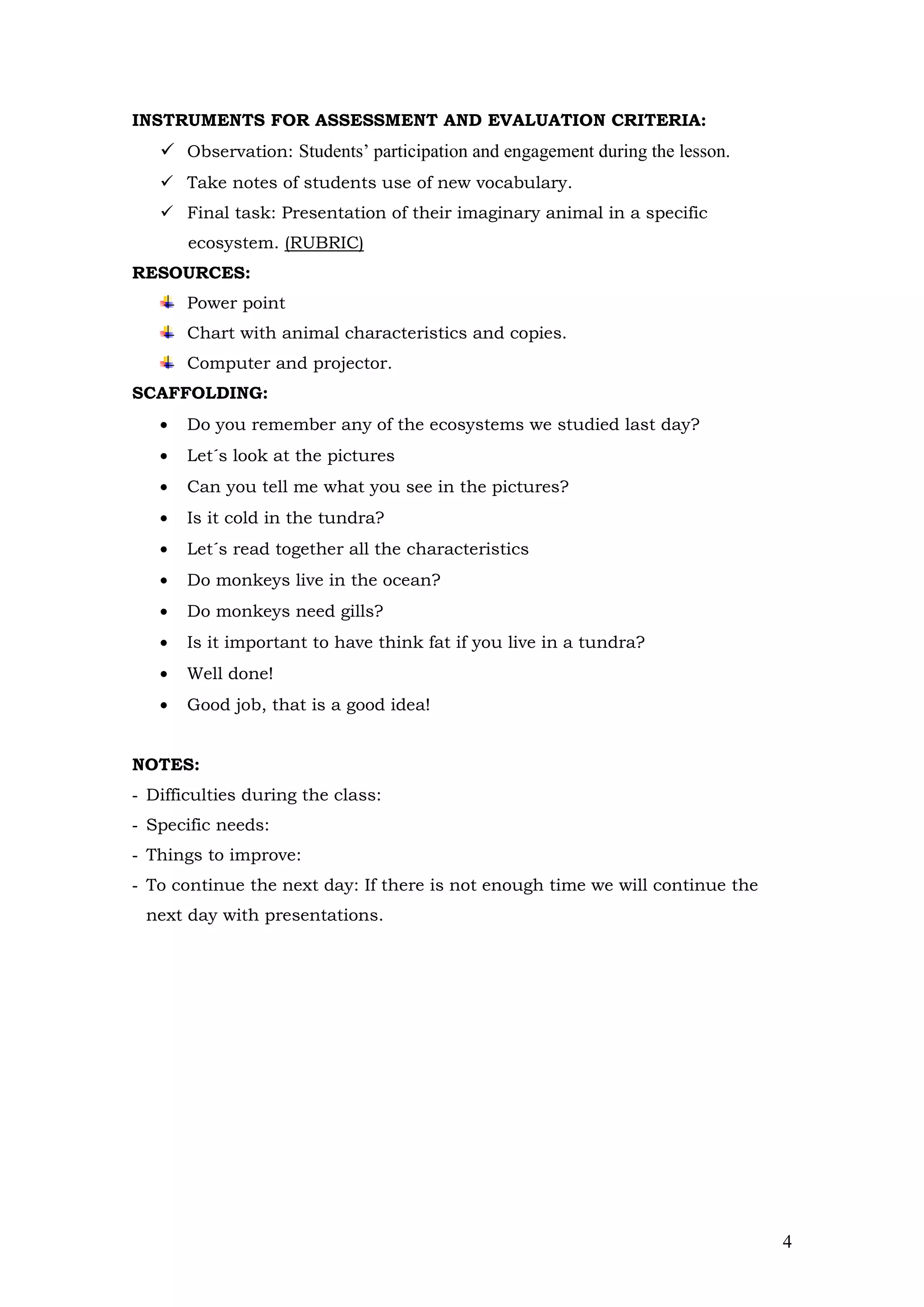This document outlines a lesson plan about habitats around the world. The lesson has three main parts: 1) A warmup activity reviewing characteristics of ecosystems like rainforests, deserts, oceans, and tundras. 2) An activity where students analyze animal characteristics needed to survive in different ecosystems. 3) Students create an imaginary animal adapted to a particular habitat and present its characteristics. The goal is for students to understand relationships between animal traits and habitats.



